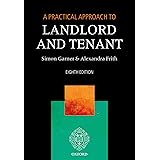As highlighted in the video above, a strategic approach to real estate investment in Germany can yield significant financial advantages, particularly through tax optimization. For high-income earners, specifically, the German buy-to-let model presents a compelling proposition, often resulting in tax benefits amounting to tens of thousands of euros over a decade. Understanding the nuances of these incentives is crucial for anyone looking to build substantial wealth through property.
Germany’s property market, while stable, offers unique opportunities for investors who understand its tax landscape. Unlike many other nations, the German system actively incentivizes renting out properties over owner-occupancy when it comes to tax deductions. This critical distinction forms the bedrock of a lucrative investment strategy for many discerning individuals.
The Foundational Difference: Why Buy-to-Let Excels in German Real Estate Investment
At the heart of Germany’s advantageous property investment environment lies a clear tax distinction between buying a home to live in and buying a property to rent out. When you purchase a property for personal use, your ability to claim tax deductions is notably restricted. For instance, the interest paid on your mortgage cannot be written off as a business expense.
However, the landscape shifts dramatically when you engage in the buy-to-let model. As an investor earning rental income, the German tax authority, the Finanzamt, views your property as an income-generating asset. This classification unlocks a range of powerful tax benefits designed to encourage landlords and stimulate the housing market, making buy-to-let Germany a financially attractive option.
Unlocking Key Tax Benefits: Interest Deductions and Depreciation (AfA)
One of the most significant advantages of renting out property in Germany is the ability to deduct certain costs from your overall taxable income. Consider an example: if you earn €100,000 gross taxable income annually and generate an additional €20,000 from rental properties, your total taxable income stands at €120,000. However, this is where strategic deductions come into play.
Crucially, the interest paid on your mortgage becomes a deductible expense. If you pay €10,000 in interest over a year, your taxable income effectively reduces from €120,000 to €110,000. This direct reduction significantly impacts your final tax liability. Beyond interest, another powerful mechanism is depreciation, known as “Absetzung für Abnutzung” (AfA) in Germany.
Depreciation acknowledges that a building, like any asset, diminishes in value over time due to wear and tear. While land value is not depreciable, the building’s value certainly is. For properties built before 1925, you can typically depreciate 2.5% of the building’s value annually for 40 years. For properties built in 1925 or later, a standard rate of 2% applies over 50 years.
Imagine purchasing a property where the building value is €500,000. At a 2% depreciation rate, you can deduct €10,000 from your taxable income each year. Combined with the €10,000 interest deduction, your total deductible amount would be €20,000. This means, in our example, your €20,000 rental income could effectively be rendered tax-free, as these deductions directly offset it, and potentially even reduce your overall tax burden further.
Special Incentives for New Builds: Boosting German Real Estate Investment
The German government actively seeks to stimulate the construction of new housing, particularly affordable options. To achieve this, specific incentives have been introduced, significantly enhancing the appeal of investing in new build properties for rent. New constructions, by default, often qualify for a higher standard depreciation rate, typically 3% over 33 years.
However, the most attractive incentive is the special depreciation available for certain new builds. This provides an extraordinary 5% depreciation per year for the first four years of ownership. This significantly accelerated depreciation allows investors to claim substantial deductions early in the investment lifecycle. This scheme, however, comes with a specific condition: the property’s construction costs must be below €5,200 per square meter, ensuring the incentive targets reasonably priced housing, not luxury developments. Such projects are often found in what are known as “satellite towns.”
The strategic intent behind these incentives is clear: encourage private investors – professionals such as doctors, lawyers, and dentists earning over €100,000 gross annually – to purchase and rent out newly constructed properties. By doing so, the government can boost housing supply while offering investors compelling tax benefits. An investor with a 40% personal income tax rate, leveraging these deductions, could see savings of €10,000 annually from a €25,000 deduction, accumulating to an impressive €50,000 in tax benefits over 10 years, depending on their individual income and tax situation.
Strategic Investment: The Growing Appeal of Satellite Towns for Buy-to-Let Germany
While major German cities like Berlin, Munich, and Hamburg offer strong rental markets, the cost of new builds within these central areas often exceeds the €5,200 per square meter threshold required for special depreciation. This directs savvy investors towards rapidly developing “satellite towns” – communities located within a 30-minute to one-hour commute of major urban centers.
These towns offer the ideal balance: more affordable construction costs that qualify for generous tax incentives, combined with robust demand from commuters seeking more spacious or affordable living options outside the bustling city. A prime example is Zossen in Brandenburg, approximately 45 minutes to an hour from Berlin. Projects in such locations, like the one mentioned in the video which sold out in three months, demonstrate the strong market appetite.
Investing in satellite towns capitalizes on several growth drivers. Population growth, particularly around major economic hubs, naturally expands into these surrounding areas. Furthermore, improved infrastructure and public transport links make commuting more viable, enhancing the desirability of these locations. This creates a dual benefit for investors: immediate tax advantages from new builds and long-term property appreciation driven by urban expansion and demographic shifts.
Navigating the Landscape: Potential Risks in German Real Estate Investment
While the benefits of real estate investment in Germany, especially buy-to-let, are substantial, it’s essential to approach any investment with a clear understanding of potential risks. Every opportunity carries its own set of challenges, and the German property market is no exception.
One primary concern, particularly with new build properties, revolves around the developer. There is always the risk that a developer may not complete the project as promised, or that completion could be significantly delayed. Both scenarios can lead to financial strain and lost rental income for the investor. While robust contracts and legal frameworks exist in Germany, vigilance and due diligence in selecting reputable developers are paramount.
A third common risk, pertinent to any rental property, involves problematic tenants. Although tenant rights in Germany are strong, they are not absolute. Non-payment of rent for a specified duration or significant breaches of contract can lead to termination of the tenancy. However, the eviction process can be lengthy and costly, impacting an investor’s cash flow. Thorough tenant screening, comprehensive insurance, and proactive property management can mitigate these challenges, ensuring a smoother investment journey in the rewarding German property market.









